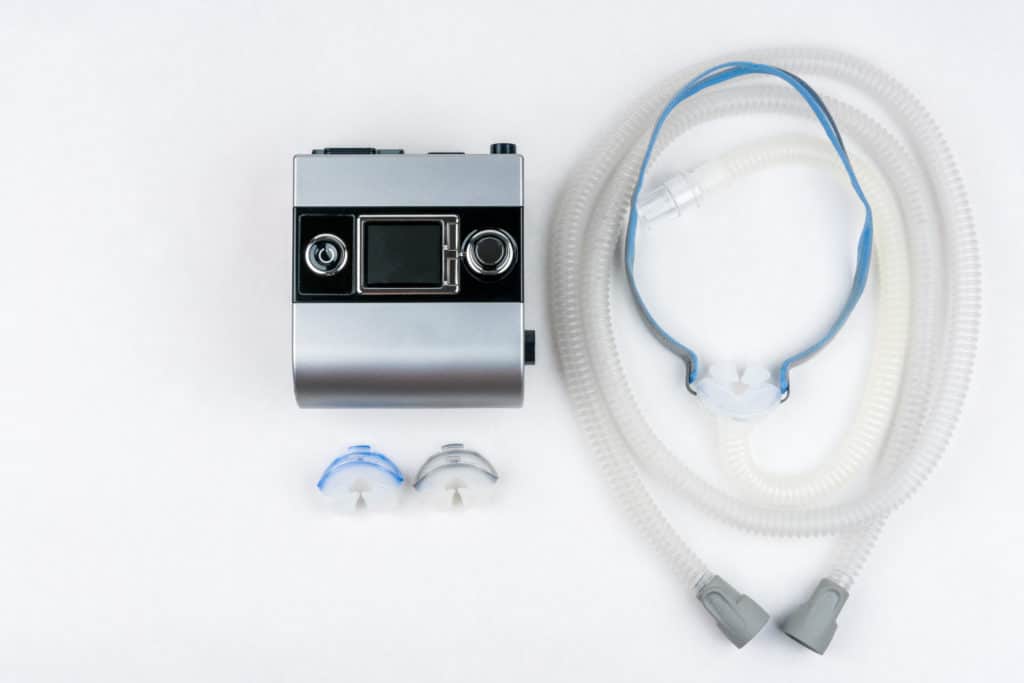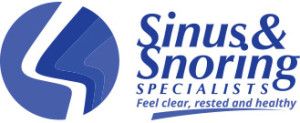Sleep Apnea
What is Obstructive Sleep Apnea?
Obstructive sleep apnea is a condition where airflow through the upper airway stops periodically while sleeping. When this happens more than 5 times per hour it is classified as Obstructive Sleep Apnea, causing serious medical problems and daytime fatigue.
What causes Obstructive Sleep Apnea?

- Septal deviation and chronic sinusitis
- Long uvula and soft palate
- Enlarged tonsils
- Large tongue base
- Small jaw
- Thick neck
- Obesity
Dangers of Untreated Obstructive Sleep Apnea
- Hypertension
- Diabetes
- Heart attack
- Congestive heart failure
- Obesity
- Stroke
- Dementia
Symptoms of Obstructive Sleep Apnea
If you or your bed partner notice any of the following conditions, chances are you do have obstructive sleep apnea.
- Snoring
- Witnessed gasps or pauses
- Daytime sleepiness
Testing is now very easy as we can perform Home Sleep Testing in one night to diagnose this condition.
Snoring Vs. Sleep Apnea
Dr. Daniel Slaughter explains the difference between snoring and sleep apnea, diagnosis, and treatment options for this condition.
Obstructive Sleep Apnea Treatment
At Sinus & Snoring Specialists, we offer many different options for sleep apnea treatment. Treatment options include CPAP, oral appliances, non-surgical office procedures, and surgical treatment options. Each of these categories is further described below.
- CPAP/BiPAP: continuous (or Bilevel) airway pressure is a device that fits over the nose, mouth, or both. It provides positive pressure to stent the airway open at night during sleep.
- Oral appliance therapy: we work cooperatively with sleep dentists who can make a custom oral appliance to help hold the jaw and tongue forward at night while sleeping.
- Non-Surgical Treatments: Balloon Sinuplasty, endoscopic septoplasty, turbinate reduction, nasal polyp, and Uvulapalatopharyngoplasty (UPPP) are frequently performed as an office procedure in patients with sleep apnea.
CPAP Alternatives
If you have Obstructive Sleep Apnea and unable to tolerate CPAP therapy, your nose may be blocked. Dr. Slaughter discusses alternatives to CPAP therapy.
CPAP and BiPAP

Frequently nasal and sinus office procedures are done before the CPAP to allow an open and clear nasal airway to apply the pressure comfortably at a low pressure. This increases the ability for the patient to wear the nasal mask or pillow through the night.
Oral Appliance Therapy
Oral Appliance Therapy (OA) can be quite effective for both snoring and apnea. The basic principle is that relaxation of the jaw in sleep allows the tongue to fall back and crowd the airway. We work closely with specialized sleep dentists and orthodontists who make custom-fitted oral appliances for our patients. (rewrote) Typically these are patients that have a large tongue.
In many cases, we will be performing a balloon sinuplasty procedure along with a UPPP to correct the nasal and soft palate issues. An oral appliance is then used to further assist by addressing the large tongue. The oral appliance helps hold the jaw and therefore the attached tongue forward a few millimeters to further open the airway.
Non-Surgical Sleep Apnea Treatment
Dr. Slaughter offers many of the most advanced sinus and nasal procedures available as part of our Sinus and Nasal Center. These procedures can dramatically reduce snoring and apnea.
Snoring usually comes from issues in the nose and the throat. Any form of nasal congestion increases snoring and obstructive sleep apnea. Think about a garden hose. If you place your thumb over the exit of the hose the water comes out faster and more turbulent. Anatomical obstruction in the nose will similarly cause the airflow to speed up and become more turbulent as it passes through the nose while the patient sleeps.
A deviated septum, swollen turbinates, chronic sinus infection, nasal polyps, and nasal allergies are all common reasons for the nose to be congested. We offer many options for the correction of snoring and obstructive sleep apnea. These procedures are typically done in combination with each other when necessary and take about 15 minutes. There is rapid recovery with most patients able to work the next day.
The non-surgical treatment options offered for Snoring and obstructive sleep apnea include the following:
- Balloon Sinuplasty
- Endoscopic Septoplasty
- Submucosal Turbinate Reduction
- Endoscopic Polyp Removal
- Soft Palate Tightening (UPPP)
Balloon Sinuplasty
Balloon Sinuplasty offers gentle non-surgical opening of the sinus outflow tracts. This resolves chronic sinus congestion and recurring sinus infections with a great improvement in nasal breathing, reduction in snoring as well as obstructive sleep apnea.
Endoscopic septoplasty
Endoscopic septoplasty allows Dr. Slaughter to correct the patient’s deviated septum with the most modern technique, without the need for any packing or splinting. This will greatly reduce snoring and obstructive sleep apnea.
Submucosal turbinate reduction
Submucosal turbinate reduction can reduce the congestion in the patient’s nose with a gentle non-surgical technique similar to liposuction with big improvements in snoring and obstructive sleep apnea.
Endoscopic polyp removal
Endoscopic polyp removal can also vastly improve the patient’s nasal breathing and reduce snoring and obstructive sleep apnea.
Soft Palate Tightening (UPPP)
Soft palate tightening procedures (UPPP) are also a very important part of snoring and sleep apnea treatment. The soft palate and uvula are where most of the noise and collapse originates. In this procedure, the uvula is trimmed and a stiffening procedure using thermal fusion is done above the uvula to cause elevation and stiffening while it heals. Snoring and sleep apnea are greatly reduced with this technique especially when combined with nasal procedures.
Surgical treatments for sleep apnea
Surgical treatments under general anesthesia still play a role in treatment of apnea. Our surgical treatment options include the following:
- Tonsillectomy
- Inspire Upper Airway Stimulator Therapy
- Maxillary Mandibular Advancement Surgeries
Tonsillectomy
Tonsillectomy can be very successful in the right candidate especially when combined with uvulopalatopharyngoplasty (surgical stiffening of the soft palate and pharyngeal folds). We perform this latest outpatient procedure with the latest techniques to reduce the pain and downtime.
Maxillary Mandibular Advancement Surgeries
Maxillary Mandibular Advancement Surgeries can also be performed in conjunction with Board Certified Oral Maxillofacial Surgeons to expand the back of the airway in certain cases.
Sleep Apnea Patient Testimonial

-Andrew
“One of the best experiences I’ve ever had at any doctors office. Fast, efficient, straightforward examination and explanation of available treatments. I had been suffering from what I thought was sleep apnea for the past three months, only to discover after their examination that I had a sever chronic sinus infection. After two days of following the prescribed treatment, I’m already feeling and sleeping better. Highly recommend Dr. Slaughter for any ENT needs.”
Schedule a consultation
If you are experiencing problems related to sleep apnea, contact our office today! Call (512) 601-0303 to schedule a consultation with ENT specialist Dr. Slaughter. You can also fill out the Appointment Request Form on this page, and our staff will help you arrange your consult. Our practice looks forward to serving you!

